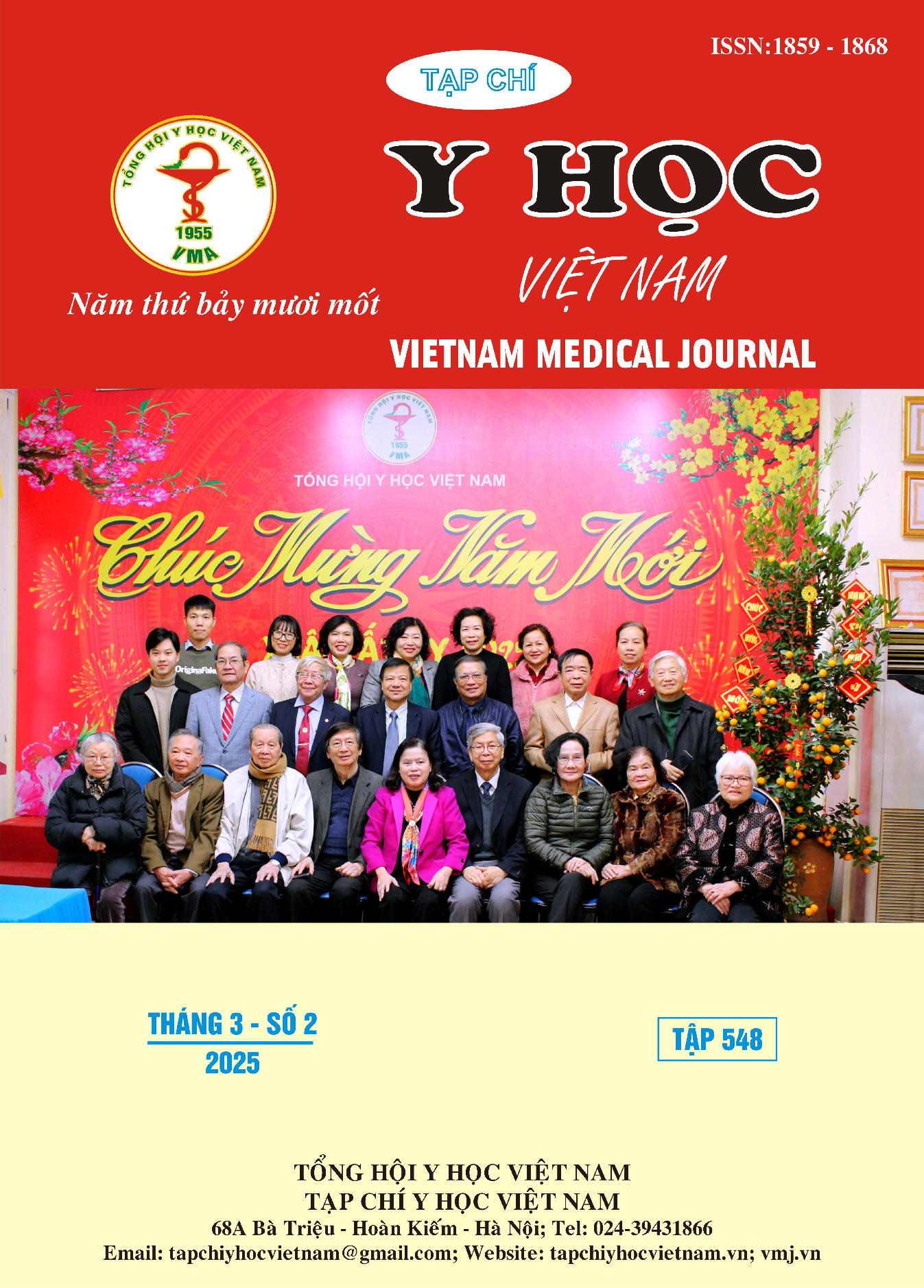MORPHOLOGICAL CHARACTERISTICS OF THE LABIAL BONE AND GINGIVAL TISSUE IN THE ANTERIOR MAXILLARY TEETH: A STUDY ON CBCT IMAGES
Main Article Content
Abstract
Background: The buccal bone and gingival tissue in the anterior maxillary region are important factors that determine the aesthetics and success of implant treatment. Objective: To determine the distance from the cemento-enamel junction to the buccal alveolar crest (CEJ – AC), and the distance from the buccal gingival margin to the buccal alveolar crest (GM – AC) of the anterior maxillary teeth, the position of the roots of the anterior maxillary teeth in the alveolar bone, the thickness of the buccal gingival tissue in the anterior maxillary region, and to evaluate the correlation between the buccal bone and the buccal gingival tissue in the anterior maxillary region. Materials and methods: A descriptive cross-sectional study analyzing 100 CBCT images that met the selection criteria. The anterior maxillary teeth were measured in a vertical plane: the thickness of the buccal bone at positions 1mm (point A), 3mm (point B), 5mm (point C) from the alveolar crest, and at the apex; the thickness of the gingival tissue at point A; the distances CEJ – AC and GM – AC; and classification of the position of the roots according to Kan 2011. Results: The CEJ – AC distance gradually increased from the central incisor (1.92 ± 0.86) to the canine (2.40 ± 1.79), whereas the GM – AC distance gradually decreased from the central incisor (3.10 ± 0.69) to the canine (2.96 ± 1.48). The majority of the sagittal root positions belonged to Type I (94.85%) according to the Kan classification 2011. The gingival tissue around the central incisor was the thickest (0.76 ± 0.19), followed by the lateral incisor (0.59 ± 0.19), and thinnest around the canine (0.53 ± 0.19). The correlation between buccal bone thickness and buccal gingival tissue thickness (measured at point A) showed an inverse correlation with a weak level of correlation, |R|<0.3 (p < 0.05). Conclusion: Most patients had a thin buccal gingival phenotype, there was a light inverse correlation between buccal bone and buccal gingival tissue thickness, and most of the roots were positioned against the labial cortical plate (Type I according to Kan).
Article Details
Keywords
CBCT, CEJ – AC, GM – AC, sagittal root position
References
2. Becker W., Goldstein M., Becker B. E., Sennerby L. (2005), "Minimally invasive flapless implant surgery: a prospective multicenter study", Clin Implant Dent Relat Res, 7 (1), pp.S21-27.
3. Kan J. Y., Roe P., Rungcharassaeng K., Patel R. D., Waki T., et al. (2011), "Classification of sagittal root position in relation to the anterior maxillary osseous housing for immediate implant placement: a cone beam computed tomography study", Int J Oral Maxillofac Implants, 26(4), pp.873-876.
4. Nowzari H., Molayem S., Chiu C. H. K., Rich S.K. (2012), "Cone beam computed tomographic measurement of maxillary central incisors to determine prevalence of facial alveolar bone width ≥2 mm", Clinical implant dentistry and related research, 14(4), pp.595-602.
5. Qahash M., Susin C., Polimeni G., Hall J., Wikesjo U. M. (2008), "Bone healing dynamics at buccal peri-implant sites", Clin Oral Implants Res, 19(2), pp.166-172.
6. Schwartz A. D., Chaushu G. (1998), "Immediate implant placement: a procedure without incisions", J Periodontol, 69(7), pp.743-750.
7. Chen S. T., Darby I. B., Reynolds E. C., Clement J. G. (2009), "Immediate implant placement postextraction without flap elevation", J Periodontol, 80(1), pp.163.
8. Spray J. R., Black C. G., Morris H. F., Ochi S. (2000), "The influence of bone thickness on facial marginal bone response: stage 1 placement through stage 2 uncovering", Ann Periodontol, 5(1), pp.119-128.


